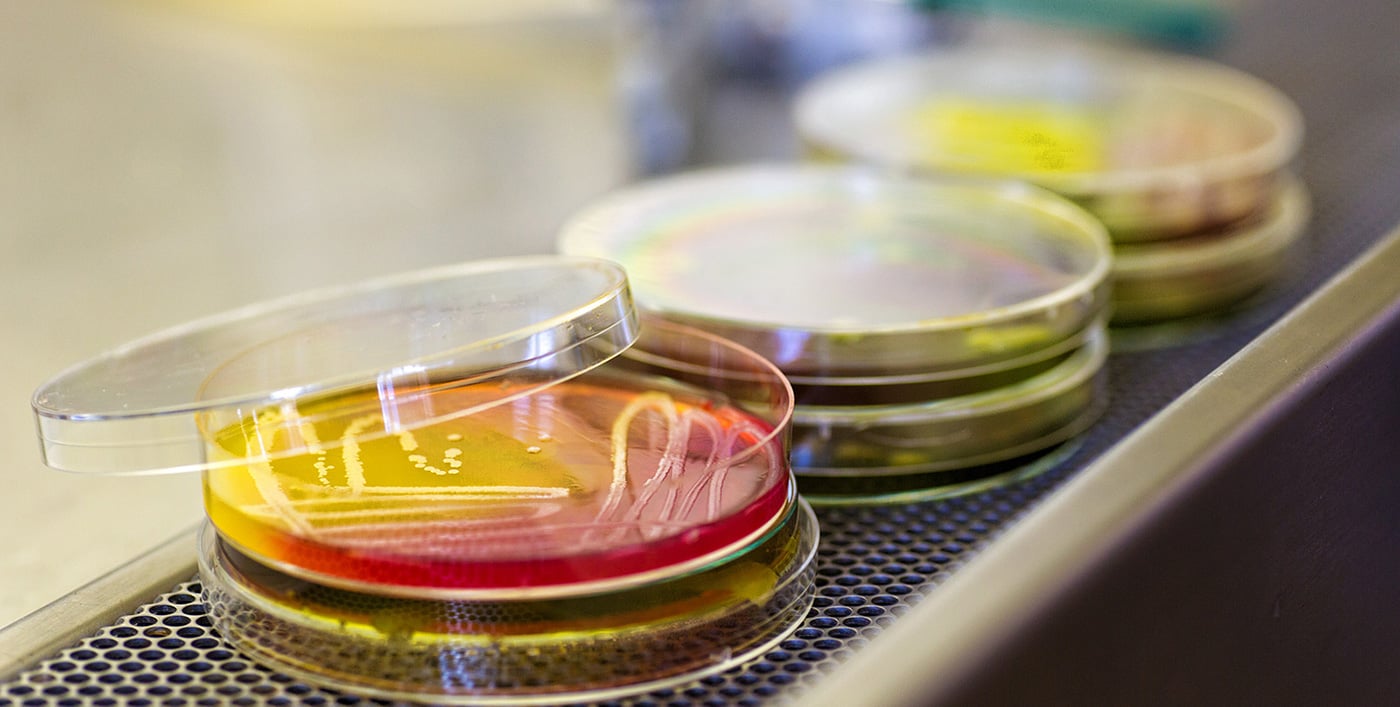New publication: microcalorimetry provides robust antimicrobial susceptibility test
The first publication from Symcel’s European H2020 project was published at the end of January. The project named BADGER (Bacterial Analysis and Diagnostics through Growth and Energy-release in Real-time) focuses on clinical validation for new antimicrobial combination testing methods. The study published in Clinical Microbiology and infection shows that isothermal microcalorimetry (IMC) accurately and robustly determine the minimum inhibitory concentrations (MICs) of extensively drug-resistant (XRD) Gram-negative bacilli.
Clinical Validation
Any new diagnostic test must be validated in the clinic against current methods. In this new publication, the BADGER project partners set out to test if isothermal microcalorimetry could be used to determine MICs and if it could, did it compare to the methods that are currently being used in the clinic.
Each of the test sites used the calScreener as the microcalorimetry method and tested a panel of XRD isolates including Escherichia coli, Klebsiella pneumoniae, Pseudomonas aeruginosa and Acinetobacter baumannii. Most clinical laboratories today use either disk diffusion assays or a broth microdilution (BMD) assay to determine antimicrobial susceptibility. In this publication, each center compared microcalorimetry to a standard BMD.
The results showed clear and robust agreement between the BMD and the isothermal microcalorimetry (IMC) results from the calScreener. The publication states:
“In conclusion, we have shown that the determination of MICs based on metabolic activity of bacteria could be achieved using the new IMC device, calScreener.”
Improving on current methods
Generating the same results as current gold standards is an important first step but is not enough. In order to have something really new and exciting, isothermal microcalorimetry must be better.
It wasn’t within the scope of this publication to fully assess two of the main benefits of microcalorimetry and specifically, the calScreener. These are speed of detection and real-time monitoring. However, even though these features were not extensively tested (as they will be in future publications), there were some hints that they were important.
❱❱ Want to stay informed about new publications? ❰❰
Here is another excerpt from the publication:
“Despite the fact that some isolates require 18 h, many isolates could be correctly classified in less time than the reference method.”
In this case, the reference method was the BMD. Therefore, the study found that although both microcalorimetry and BMD were always run for 18 hours as a benchmarking test, microcalorimetry with the calScreener would often accurately determine the MIC earlier than 18 hours.
The publication also noted that bacterial growth could be monitored in real-time which was part of the reason that the isothermal calorimetry method could predict the MIC earlier in some instances when compared to the BMD.
“In some strains, the IMC method was faster than the BMD for determining MICs. The calScreener had an additional advantage that the bacterial growth in the presence of antibiotics could be monitored in real-time, which is not possible with the conventional BMD testing.”
A global antimicrobial resistance problem
Innovation in this field cannot come fast enough. Antimicrobial resistance is a growing problem in hospitals and communities around the world and was declared “one of the biggest public health challenges of our time,” by the CDC.
Antibiotic resistance does not just represent a health threat in its own right, but it can also compromise other treatments. Surgery, chemotherapy and immune suppression all put patients at risk of infection. The risk is significantly increased when the correct antibiotic cannot be administered in time due to antimicrobial resistance.
Multicenter study
This study was strengthened enormously through strong collaboration through different European Centers in Sweden, Spain, Italy and The Netherlands:
Karolinska Institute, Stockholm, Sweden
Lead by Professor Christian Giske with work from Chaitanya Tellapragda and Badrul Hasan.
Hospital Universitario Ramón y Cajal e Instituto Ramón y Cajal de Investigación Sanitaria (IRYCIS), Madrid, Spain
Lead by Professor Rafael Cantón with work from Ainhize Maruri and Desiree Gijón.
Florence Careggi University Hospital, Florence, Italy
Lead by Professor Gian Maria Rossolini with work from Alberto Antonelli and Marco Coppi.
Erasmus MC, Rotterdam, The Netherlands
Lead by Assistant Professor Willem van Wamel and Professor Annelies Verbon with contributions from Corné de Vogel.
Future outlook
The future publications from the BADGER project will expand on this work and investigate more of the specific benefits of isothermal microcalorimetry which are:
Real-time monitoring: the calScreener can monitor bacterial metabolism in real time. This gives the benefit of potentially detecting resistance earlier. It also allows us to build up a unique metabolic fingerprint for different species depending on if they are sensitive or resistant to a given antibiotic.
Early detection: this publication hinted that early detection could be a feature of the isothermal microcalorimetry technique. We will explore this explicitly in future publications.
Detecting resistant bacteria in cell culture: the growth of bacteria depends on their interaction with the environment. During an infection, this is often with human epithelial or immune cells. Using microcalorimetry, it is possible to determine the effect of antibiotics on bacteria that are being cultured with relevant eukaryotic cells.
❱❱ Interested in using the technology for your research? ❰❰
Acknowledgements
This project has received funding from the European Union’s Horizon 2020 research and innovation programme under grant agreement No 729076. The results were presented in part at the 29th European Congress of Clinical Microbiology and Infectious Diseases (ECCMID) held during April 2019 at Amsterdam, The Netherlands.
References
Isothermal microcalorimetry minimal inhibitory concentration testing in extensively drug-resistant Gram-negative bacilli – A multicenter study
Tellapragda, Chaitanya et al.
Clinical Microbiology and Infection, in press.
https://doi.org/10.1016/j.cmi.2020.01.026
Author

Jesper Ericsson, Symcel’s CEO
Engineer with a PhD in medical science to leading S&M of research-based products, Jesper is an all-around entrepreneur with a unique skillset ideal for innovating in the life sciences.
